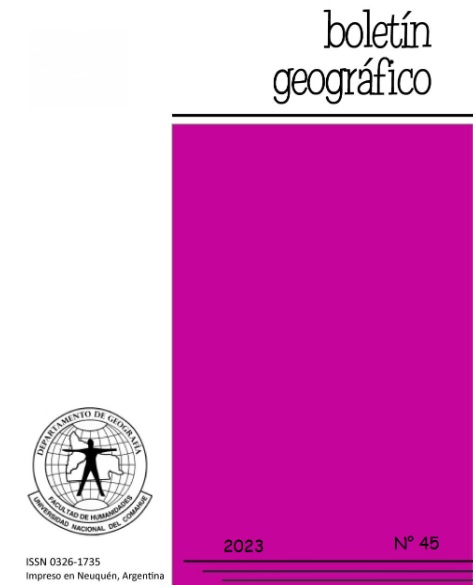La participación humana con el auge de la inteligencia artificial en el ámbito de la Salud Geoespacial
Palabras clave:
NPGIS, Participación Geoespacial, Inteligencia artificial, Tecnología geográfica, SaludResumen
En el mundo de la Web 3, las monedas digitales y las ciudades virtuales, las decisiones humanas son muy especiales. De hecho, es muy importante explicar la respuesta humana y la inteligencia artificial en el campo de la salud después de un evento y crear un sistema geográfico colaborativo basado en tecnología moderna para que este proceso conduzca al restablecimiento de servicios esenciales con prioridad de salud pública en un país.
En esta investigación, se realizaron preguntas espaciales de acuerdo con la opinión pública, los actores interesados y los tomadores de decisiones en diferentes condiciones mentales y emocionales. Además, se utilizaron dos métodos estadísticos y de clasificación diferentes para comprender la extrañeza de las condiciones mentales de las personas en el entorno matemático. Todos los métodos mencionados fueron realizados mediante el software diseñado para la toma de decisiones de ubicación en igualdad de condiciones.
Se investigó una región como ejemplo que puede generalizarse a un país e incluso a una escala mayor. Los resultados muestran que los factores tiempo están completamente relacionados con los criterios de decisión. Usar tecnologías emergentes es genial, pero dejar que la inteligencia artificial tome decisiones es completamente incorrecto. El hombre vive de sus elecciones para tomar decisiones, por lo tanto, utiliza todos los criterios relevantes en la toma de decisiones espaciales.
Este estudio pionero, muestra que los humanos pueden tomar decisiones óptimas en diferentes situaciones según las mismas condiciones. Pero la inteligencia artificial sólo toma decisiones lógicas que no son compatibles con la mentalidad humana. La continuación de esta investigación presenta un valor potencial para ser utilizada por neurólogos o especialistas en salud mental enfatizando la importancia de las ciencias geográficas en el desarrollo urbano. Quizás sea posible resolver problemas y eventos médicos con inteligencia artificial, pero pareciera que al menos durante las próximas décadas, incluso con la aparición y continuidad de la inteligencia artificial, no será posible tomar decisiones en el ámbito de la salud sin la presencia de los humanos.
Descargas
Citas
Aeon, B., Faber, A., & Panaccio, A. (2021). Does time management work? A meta-analysis. PLOS ONE, 16(1), e0245066. https://doi.org/10.1371/journal.pone.0245066
Anderson, M., & Radil, S. M. (2019). A hard binary to shake: The limitations and possibilities of teaching GIS critically. Canadian Geographer, 64(4), 471–483. https://doi.org/10.1111/cag.12526
Anderson, M., & Sternberg, C. (2012). “Non-White” gentrification in Chicago’s Bronzeville and Pilsen. Urban Affairs Review, 49(3), 435–467. https://doi.org/10.1177/1078087412465590
Aqib, M., Kumar, D., & Tripathi, S. (2022). Machine Learning for Fog Computing: Review, Opportunities and a Fog Application Classifier and Scheduler. Wireless Personal Communications. https://doi.org/10.1007/s11277-022-10160-y
Arribas-Bel, D., Green, M. A., Rowe, F., & Singleton, A. (2021). Open data products-A framework for creating valuable analysis ready data. Journal of Geographical Systems, 23(4), 497–514. https://doi.org/10.1007/s10109-021-00363-5
Badwi, I. M., Ellaithy, H. M., & Youssef, H. E. (2022). 3D-GIS parametric modelling for virtual urban simulation using CityEngine. Annals of GIS, 28(3), 325–341. https://doi.org/10.1080/19475683.2022.2037019
Baron, S., Miller, K., & Tallant, J. (2022). Out of time. In Oxford University Press eBooks. https://doi.org/10.1093/oso/9780192864888.001.0001
Bayazit, O. (2006). Use of analytic network process in vendor selection decisions. Benchmarking: An International Journal, 13(5), 566–579. https://doi.org/10.1108/14635770610690410
Brown, G. (2016b). A review of sampling effects and response bias in Internet Participatory Mapping (PPGIS/PGIS/VGI). Transactions in Gis, 21(1), 39–56. https://doi.org/10.1111/tgis.12207
Brunsdon, C., & Comber, A. (2020). Opening practice: supporting reproducibility and critical spatial data science. Journal of Geographical Systems, 23(4), 477–496. https://doi.org/10.1007/s10109-020-00334-2
Builes, D. (2021). Look at the time! Analysis. https://doi.org/10.1093/analys/anab008
Cochran W G., (1977). Sampling Technique. third Edition, John Wiley and Sons Inc., New York, 442 Pages, https://archive.org/download/ Cochran1977SamplingTechniques _201703 / Cochran_ 1977_ Sampling %20Techniques.pdf
Choi, S. Y., Abel, M., Siqi-Liu, A., & Umanath, S. (2021). National identity can be comprised of more than pride: Evidence from collective memories of Americans and Germans. Journal of Applied Research in Memory and Cognition, 10(1), 117–130. https://doi.org/10.1016/j.jarmac.2020.09.004
Dunn, C. E. (2007). Participatory GIS — a people’s GIS? Progress in Human Geography, 31(5), 616–637. https://doi.org/10.1177/0309132507081493
Fagerholm, N., García-Martín, M., Torralba, M., Bieling, C., & Plieninger, T. (2022). Public participation geographical information systems (PPGIS): Participatory research methods for sustainability ‐ toolkit #1. Gaia (Heidelberg), 31(1), 46–48. https://doi.org/10.14512/gaia.31.1.10
Fallah, M., (2022) August 23, Doctoral dissertation under the supervision of Dr. Tajoddin Karmi, Assistant Professor of Faculty of Geographical Sciences and Department of Urban Planning, Kharazmi University.
Fallah, M., Karami, T., & Kojouri, M. K. (2022a). National participant geospatial information system in urban planning. ВісникХарківського Національного Університету Імені В.Н. Каразіна, 27, 32–50. https://doi.org/10.26565/1992-4259-2022-27-03
Fallah, M., Karami, T., & Kojouri, M. K. (2022b). Explaining the Role of National Participant Geospatial Information System in the Effectiveness of Urban Services with a New Approach. Jurnal Geografi, 15(1), 32. https://doi.org/10.24114/jg.v15i1.38992
Friedman, J. H., Hastie, T., & Tibshirani, R. (2010). Regularization paths for generalized linear models via coordinate descent. Journal of Statistical Software, 33(1). https://doi.org/10.18637/jss.v033.i01
Friedman, M. (1959). The demand for money: Some theoretical and empirical results. Journal of Political Economy, 67(4), 327–351. https://doi.org/10.1086/258194
Friedmann, J. (1988). Planning in the public domain. https://doi.org/10.1515/9780691214009
Ghose, R. (2017). Public-Participation GIS. International Encyclopedia of Geography: People, the Earth, Environment and Technology, 1–11. https://doi.org/10.1002/9781118786352.wbieg1155
Goreis, A., & Voracek, M. (2019). A Systematic Review and Meta-Analysis of Psychological Research on Conspiracy Beliefs: field characteristics, measurement instruments, and associations with Personality traits. Frontiers in Psychology, 10. https://doi.org/10.3389/fpsyg.2019.00205
Greene, T. J. (2022). Disinformation: the nature of facts and lies in the post-truth era. Public Services Quarterly, 18(4), 301–302. https://doi.org/10.1080/15228959.2022.2121136
Haiti Projects., (2019), Empowering Women and their families in Rural Haiti., https:// www. Haitiprojects .org/ what-is-haiti-projects
Haiti Situation Report, (2019), UN Office for the Coordination of Humanitarian Affairs, UN Office for the Coordination of Humanitarian Affairs., To learn more about OCHA's activities, https://www.unocha.org, FTS https://fts.unocha.org/appeals/679/summary
Indrajit, A., Van Loenen, B., & Van Oosterom, P. (2019). Assessing spatial information themes in the spatial Information Infrastructure for Participatory Urban Planning Monitoring: Indonesian Cities. ISPRS International Journal of Geo-information, 8(7), 305. https://doi.org/10.3390/ijgi8070305
Isfandiyār, M. I. a. I. (1905). An abridged translation of the history of Ṭabaristʹan.
Johnson, M., Adams, V. M., Byrne, J., & Harris, R. M. B. (2022). The benefits of Q + PPGIS for coupled human-natural systems research: A systematic review. AMBIO: A Journal of the Human Environment, 51(8), 1819–1836. https://doi.org/10.1007/s13280-022-01709-z
Krejcie, R. V., & Morgan, D. W. (1970). Determining sample size for research activities. Educational and Psychological Measurement, 30(3), 607–610. https://doi.org/10.1177/001316447003000308
Larrain, A. Á., & McCall, M. K. (2018). Participatory Mapping and Participatory GIS for Historical and Archaeological Landscape Studies: a Critical Review. Journal of Archaeological Method and Theory, 26(2), 643–678. https://doi.org/10.1007/s10816-018-9385-z
Lewenstein, B. V. (2022). Is citizen science a remedy for inequality? Annals of the American Academy of Political and Social Science, 700(1), 183–194. https://doi.org/10.1177/00027162221092697
Malpass, A. (2021). All the time in the world. Mind, 131(523), 788–806. https://doi.org/10.1093/mind/fzaa086
McAllister, J. (2019). Does artistic value pose a special problem for time travel theories? British Journal of Aesthetics, 60(1), 61–69. https://doi.org/10.1093/aesthj/ayz041
Prener, C. (2021). Digitizing and Visualizing Sketch map Data: A Semi-Structured Approach to Qualitative GIS. Cartographica: The International Journal for Geographic Information and Geovisualization, 56(4), 267–283. https://doi.org/10.3138/cart-2020-0030
Radil, S. M., & Anderson, M. (2018). Rethinking PGIS: Participatory or (post)political GIS? Progress in Human Geography, 43(2), 195–213. https://doi.org/10.1177/0309132517750774
Saaty, T. L. (1990). How to make a decision: The analytic hierarchy process. European Journal of Operational Research, 48(1), 9–26. https://doi.org/10.1016/0377-2217(90)90057-i
Saaty, T. L. (2004). Fundamentals of the analytic network process — Dependence and feedback in decision-making with a single network. Journal of Systems Science and Systems Engineering, 13(2), 129–157. https://doi.org/10.1007/s11518-006-0158-y
Sharma, L., & Garg, P. (2021). Artificial intelligence. In Chapman and Hall/CRC eBooks. https://doi.org/10.1201/9781003140351
Silva, C. N. (2013a). Open-source urban governance. In Advances in electronic government, digital divide, and regional development book series (pp. 1–18). https://doi.org/10.4018/978-1-4666-4169-3.ch001
Silva, C. N. (2013b). Open-source urban governance. In Advances in electronic government, digital divide, and regional development book series (pp. 1–18). https://doi.org/10.4018/978-1-4666-4169-3.ch001
Statistical yearbook of Iran, (2018), national portal of statistics "Population of cities of Iran, Statistics Center of Iran, https://www.amar.org.ir/english/Iran-Statistical-Yearbook
Sternberg, C., & Anderson, M. (2014). Contestation and the local trajectories of neoliberal urban governance in Chicago’s Bronzeville and Pilsen. Urban Studies, 51(15), 3198–3214. https://doi.org/10.1177/0042098014532143
Tabatabai, A., Zarei, B., Kamran, D H., Ahmadi, A., (2022), Investigating the process of formation of national identity in Iran, in terms of territorialism., Journal of Geography, Vol.20, No.72, Spring 2022, http://dor.net/dor/20.1001.1.27833739.1401.20.72.2.8
Teixeira, H., Magalhães, A., Ramalho, A., De Fátima Pina, M., & Gonçalves, H. (2021). Indoor Environments and Geographical Information Systems: A Systematic Literature review. SAGE Open, 11(4), 215824402110503. https://doi.org/10.1177/21582440211050379
Usahidi H.P.E, Ushahidi Haiti Project Evaluation, (2011), in: Morrow, A., Mock, N., Papendieck, A., Kocmich, N., (2014), Independent Evaluation of the Ushahidi Haiti Project, some of the authors of this publication are also working on these related projects on 30 October. (2014), consulted in 2022 from:
Valánszki, I., Kristensen, L. S., Jombach, S., Ladányi, M., Kovács, K. F., & Fekete, A. (2022). Assessing Relations between Cultural Ecosystem Services, Physical Landscape Features and Accessibility in Central-Eastern Europe: A PPGIS Empirical Study from Hungary. Sustainability, 14(2), 754. https://doi.org/10.3390/su14020754
Wessels, B. (2010). The role of local agencies in developing community participation in E-Government and E-Public Services. In IGI Global eBooks (pp. 286–305). https://doi.org/10.4018/978-1-61520-929-3.ch015
Zolkafli, A., Liu, Y., & Brown, G. (2017). Bridging the knowledge divide between public and experts using PGIS for land use planning in Malaysia. Applied Geography, 83, 107–117. https://doi.org/10.1016/j.apgeog.2017.03.013
CDMA, Southwest Haiti Earthquake: Situational Report #01, January (2022), https://reliefweb.int/report/haiti/southwest-haiti-earthquake-situational-report-01-january-2022
Publicado
Cómo citar
Número
Sección
ARK
Licencia
Derechos de autor 2023 Boletin GeograficoLa aceptación de colaboraciones por parte de la revista implica la cesión no exclusiva de los derechos patrimoniales de los autores a favor del editor, quien permite la reutilización bajo Licencia Atribución-NoComercial-SinDerivadas 2.5 Argentina (CC BY-NC-ND 2.5 AR)
Usted es libre de:
Compartir — copiar y redistribuir el material en cualquier medio o formato
La licenciante no puede revocar estas libertades en tanto usted siga los términos de la licencia
Bajo los siguientes términos:
Atribución — Usted debe dar crédito de manera adecuada, brindar un enlace a la licencia, e indicar si se han realizado cambios. Puede hacerlo en cualquier forma razonable, pero no de forma tal que sugiera que usted o su uso tienen el apoyo de la licenciante.
NoComercial — Usted no puede hacer uso del material con propósitos comerciales.
SinDerivadas — Si remezcla, transforma o crea a partir
El simple hecho de cambiar el formato nunca genera una obra derivada, no podrá distribuir el material modificado.
No hay restricciones adicionales — No puede aplicar términos legales ni medidas tecnológicas que restrinjan legalmente a otras a hacer cualquier uso permitido por la licencia.
La cesión de derechos no exclusivos implica también la autorización por parte de los autores para que el trabajo sea alojado en el repositorio institucional y difundido a través de las bases de datos que el editor considere apropiadas para su indización, con miras a incrementar la visibilidad de la revista y sus autores.
FORMULARIO DE CESIÓN DE DERECHOS DE AUTOR



















